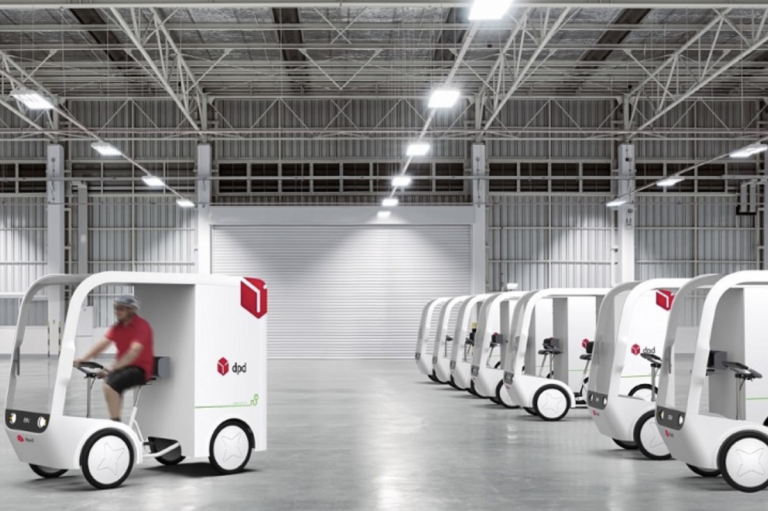Published on August 22, 2019

In the rush to get packages to your doorstep faster, delivery companies are experimenting with far-out technologies like drones and robots that can circumvent traffic—and that, most importantly, don’t need a conventional place to park while they deliver. But companies like UPS and the U.K.-based company DPD are considering a low-tech option, too: bikes.
DPD is rolling out a pilot program that uses cargo e-bikes that don’t resemble traditional bikes at all. Instead, DPD’s bike looks like a mini truck, but it’s small enough to fit inside the bike lane in London, where it’s starting to make deliveries in the city’s ultra low-emissions zone, where vehicles that don’t meet very strict emissions regulations have to pay a toll. Part of DPD’s aim with the project is to reduce its emissions to comply with regulations, while also making the city a more pleasant place for pedestrians.
Bike deliveries are nothing new—in fact, they’ve been used for many decades, particularly in cities. It’s only in the last few decades, with the rise of large delivery companies like UPS and FedEx, that the large lumbering truck has become a fixture on city streets. According to Anne Goodchild, a professor of civil and environmental engineering and the founding director of the Supply Chain Transportation and Logistics Center at the University of Washington, large trucks make sense in an older supply chain model, where you build large warehouses far outside cities and then truck packages in. “To some extent we have this assumption that the norm is this very big truck,” Goodchild says. “That hasn’t been the case forever.”
But as cities get more congested and it grows increasingly difficult for drivers to find a place to park the hulking vehicles, delivery companies are experimenting with other options.
Continue reading at Fast Company.
Originally written by Katharine Schwab for Fast Company.